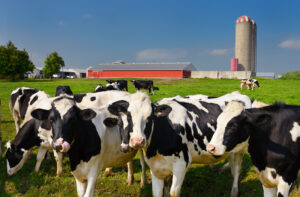
Details Unfold in Maryland School Shooting
On March 20, another school shooting occurred at Great Mills High School in St. Mary’s County, Maryland, about 65 miles southeast of Washington, D.C. This time, the shooter was a 17-year-old student. The shooter shot two students before the school’s resource officer, Deputy Blaine Gaskill, opened fire and contained the situation. It is currently unclear whether the shooter was killed by Gaskill, or if he took his own life.
Sixteen-year-old Jaelynn Rose Willey died from her injuries two days later. Her parents had to make the decision to remove her from life support after doctors declared her brain dead. Willey was the shooter’s ex-girlfriend. The two had recently broken up. She was the second-oldest of nine siblings and had been on the school’s swim team. The other injured student, a 14-year-old boy named Desmond Barnes, was shot in the thigh. He was released from the hospital the next day.
The weapon used in the shooting, a Glock handgun, was owned by the shooter’s father. This event happened just a week after students all across the nation walked out of their classrooms to protest the killings at a high school in Parkland, Florida, and just days before March For Our Lives rallies protesting gun violence took place in cities all over the United States.
Dig Deeper So far this year, there have already been twelve U.S. school shootings in which someone was hurt or killed. This averages out to 1.4 shootings per week. Visit this CNN Web site to find a complete list of the shootings. Choose one to research in more detail, then write a paragraph describing what you learn. If time allows, share your paragraph with the class.
Zega-Cola?
Soda, pop, or soft drinks . . . no matter what you call them, if you’re like most Americans, you’re a fan of these carbonated beverages. The problem is that they’re often high in sugar, which can contribute to health problems like diabetes and obesity. So what if someone invented an all-natural soda that wasn’t bad for you?
Turns out, someone already has. A Mexican carpenter named Antonio Ambrosio Salvador has invented Zega-Cola, an all-natural soft drink substitute. It’s made in small batches in Santa Ana Zegache, a Mexican village eighteen miles away from the city of Oaxaca. Despite a recent soda tax, Mexico is still the second-highest consumer of carbonated beverages in the world.
Salvador starting making Zega-Cola three years ago, but no one was buying it. Then a shortage of Coca-Cola in 2016 drew attention to Salvador’s product as a substitute. Recently, some restaurants in Oaxaca have begun selling the beverage as an alternative or even selling it exclusively. They see it as a way to support local business and to keep jobs in Mexico. But there is also a benefit for consumers: the product is all-natural. Oils including cinnamon, lavender, orange, lemon, and lime are mixed together with Arabic gum. Citric acid and caffeine are then added, and caramel is added for color. The result is a delicious soft drink that supports local jobs and doesn’t damage your health.
Dig Deeper Look up the ingredients listed on the label of your favorite soft drink. Would you be willing to try a more healthful alternative, such as Zega-Cola, if it were offered here in the United States He adds citric acid and caffeine, plus caramel for color? Why or why not?
Terror In Austin
From March 2 to March 21, the city of Austin, Texas was terrorized by a serial bomber. The bombs killed two people and injured several more. On March 2, 39-year-old Anthony Stephan House was killed when a bomb was left outside his home. Ten days later, 17-year-old Draylen Mason was killed the same way. A third package bomb injured a 75-year-old woman.
Then the bomber switched tactics. A bomb detonated by a tripwire hospitalized two men, ages 22 and 23. Two days later, a package bomb exploded at a FedEx center. A second bomb, also at a FedEx, was intercepted before it detonated. All of the bombs were made from common household items.
Austin police narrowed the list of possible suspects down to a 23-year-old unemployed college dropout. Last week, police used sophisticated technology to track the suspect’s phone until they found him in his vehicle. But when police approached the vehicle, the suspect set off another bomb inside of it, killing himself and injuring a police officer. It was discovered later that this individual had recorded a 25-minute video confession onto his cell phone. In the video, the man admits to creating seven bombs, which he gives a lot of detail about. But he never explains his motivation. He describes himself as a “psychopath” and says that he isn’t sorry for his crimes.
Dig Deeper Using this article and other internet resources, create an annotated timeline of when each of the seven bombs was detonated, including the one that ultimately killed him.
Cow Art
When you think of YouTube celebrities, does the name Derek Klingenberg come to mind?
Probably not.
But Klingenberg–a farmer from Peabody, Kansas–is sort of an internet celebrity, especially among other farmers. His agricultural-themed channel has more than 70,000 subscribers. One of the things he likes to do is arrange his cows into special formations and take photos of them with a drone. But recently, Klingenberg decided to try something new: cow space art.

Every day, over two hundred satellites orbit the earth, sending back photos and other information. Exactly where and when they will pass over us is classified. But a company called FarmersEdge uses this technology to show farmers overhead photos of their farms so that they can get a sense of their overall crop health. Klingenberg noticed that in the satellite images of his farm, the shadows were always in the same place, meaning that the satellite passes over his farm at roughly the same time every day. Using his 86-foot grain elevator as a giant sundial, he calculated that the satellite passes over his farm between 10:00 am and 10:30 am daily.
Once he had this figured out, it was time to get to work. From his truck and on foot, he quickly herded his cows into a formation, spelling out the word “Hi.” Forty-eight hours later, he checked his photos from FarmersEdge, and there was his cow space art: blurry, but legible.
Klingenberg doesn’t know what he’ll try next. Stay tuned to find out.
